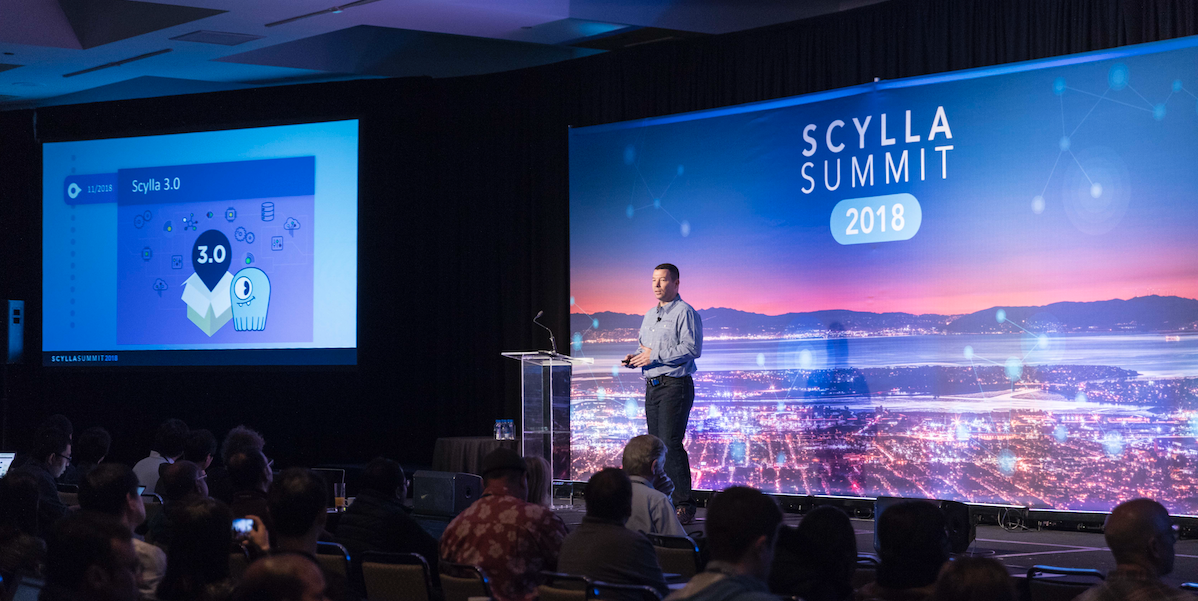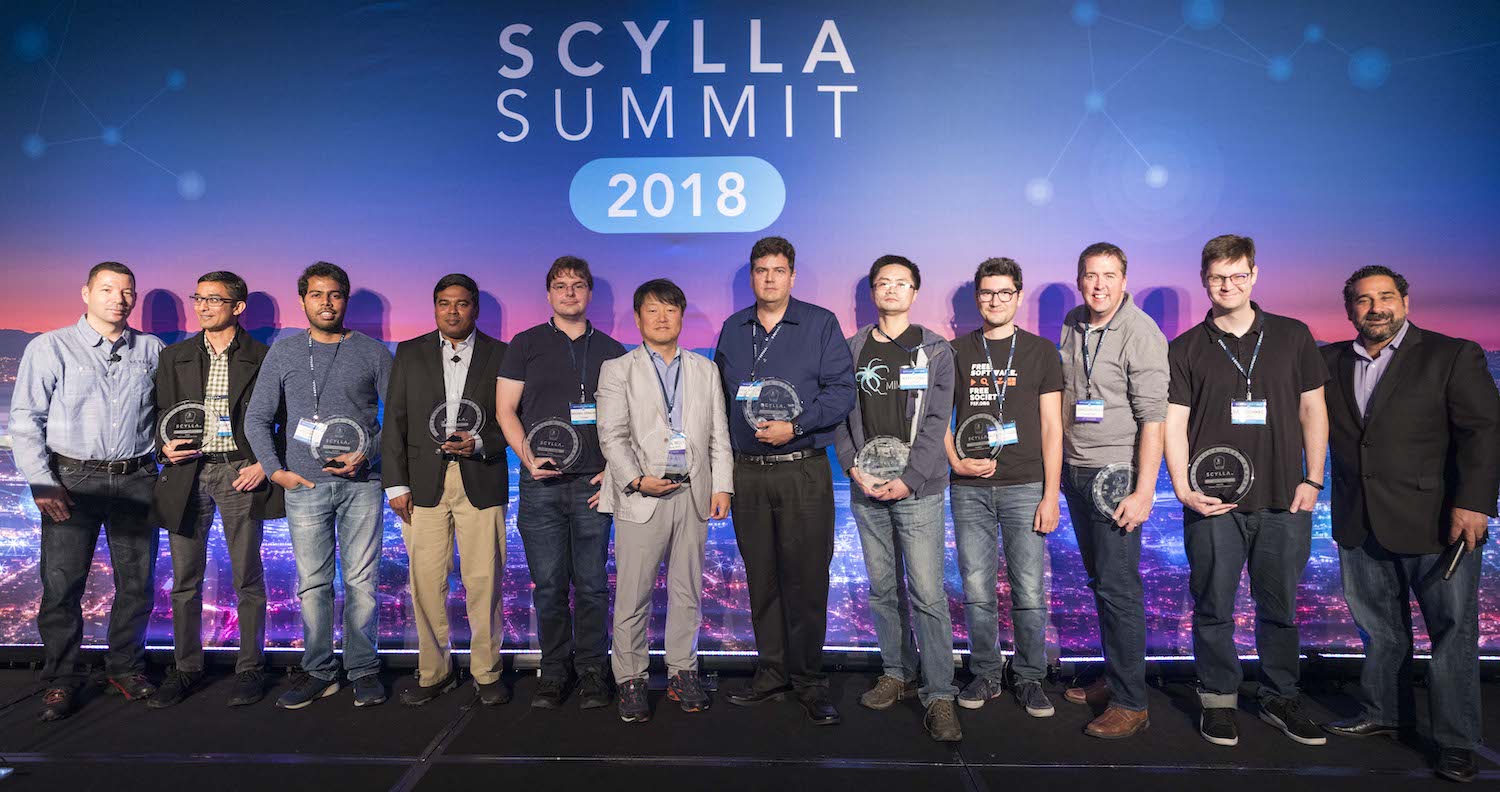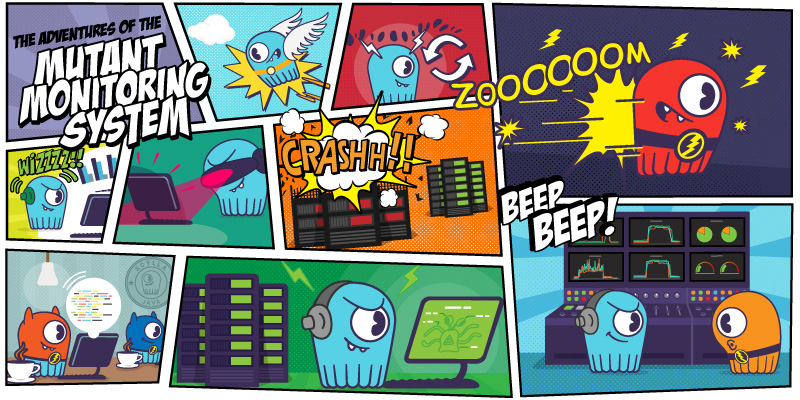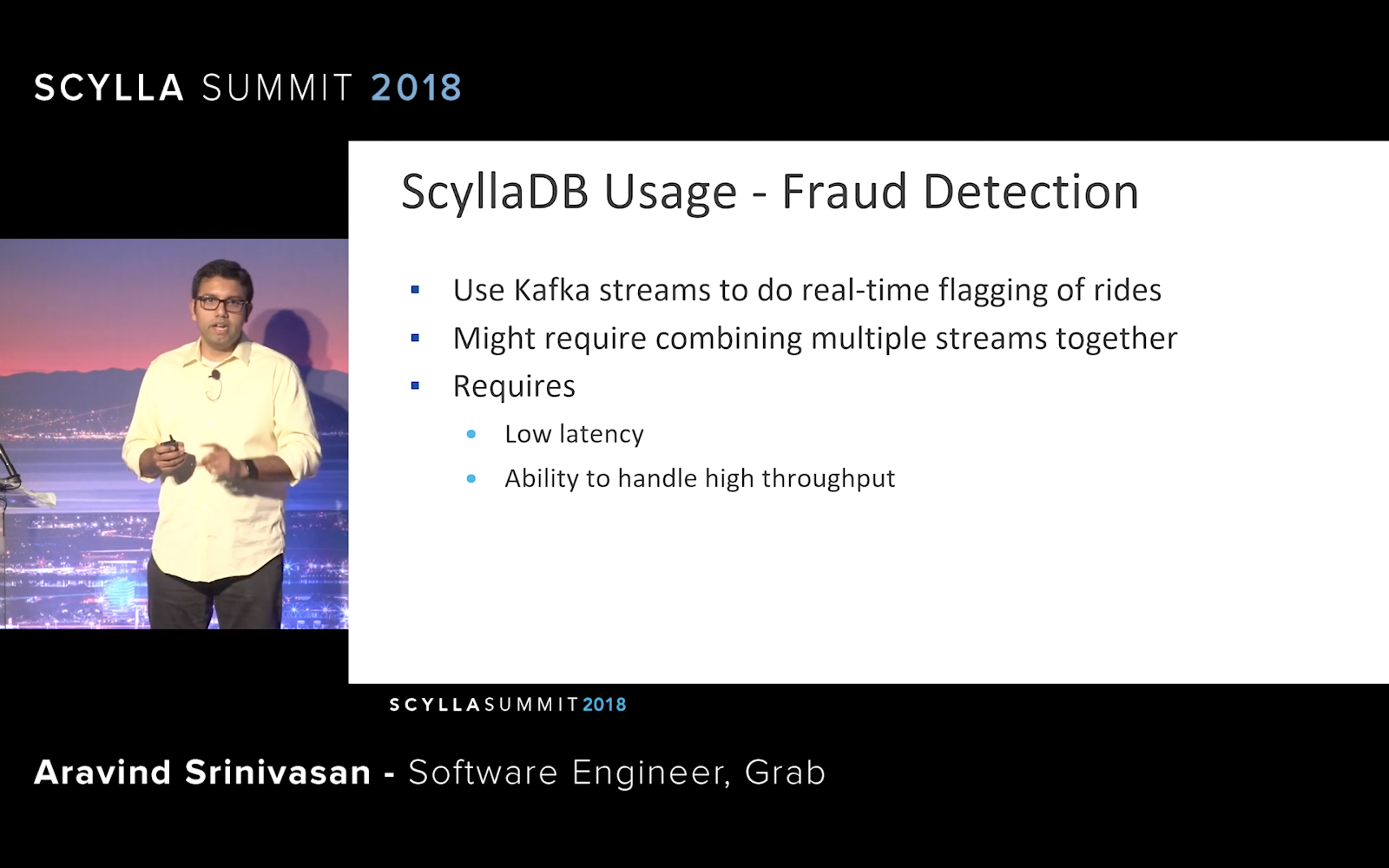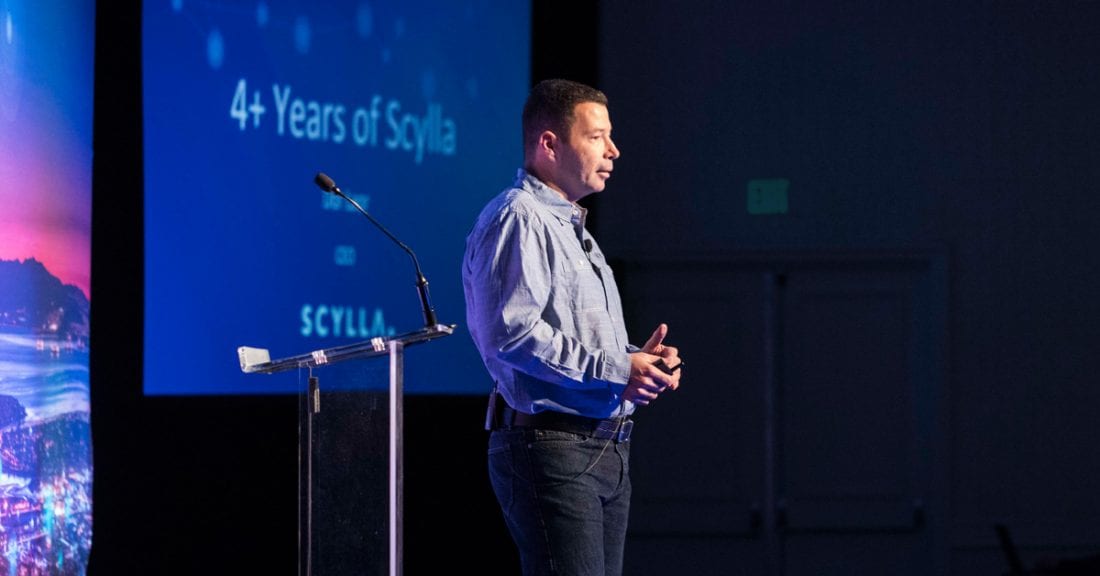
Watch the video in full:
Browse the slides:
- See our related Tech Talks page
In the beginning…
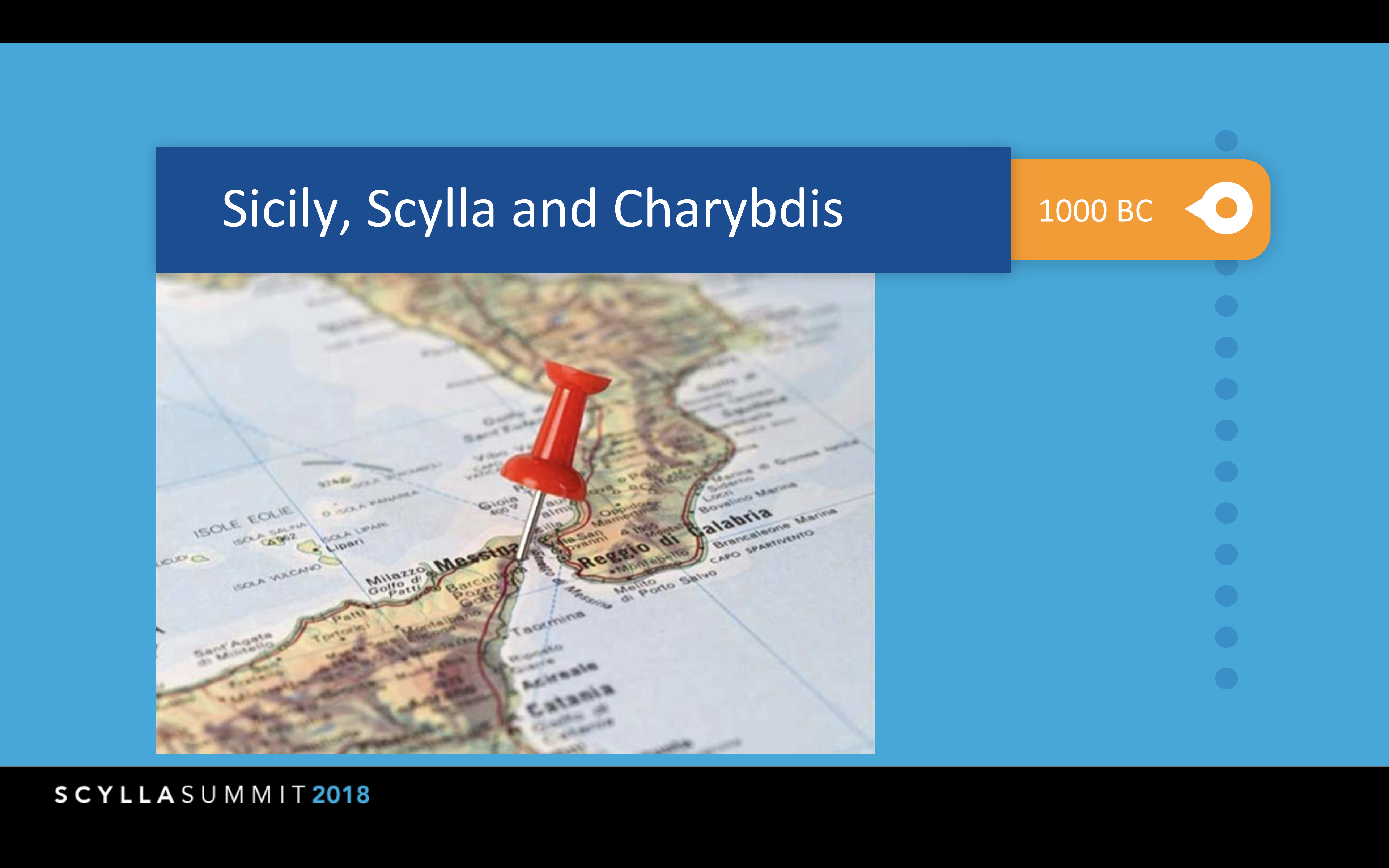
Dor shared our company’s origins. He recalled first announcing the Seastar framework in February 2015, and leaving stealth mode in September of that year. ScyllaDB CTO Avi Kivity. presented at that year’s Cassandra Summit on how a new database, ScyllaDB, could deliver 1,000,000 CQL operations per server.
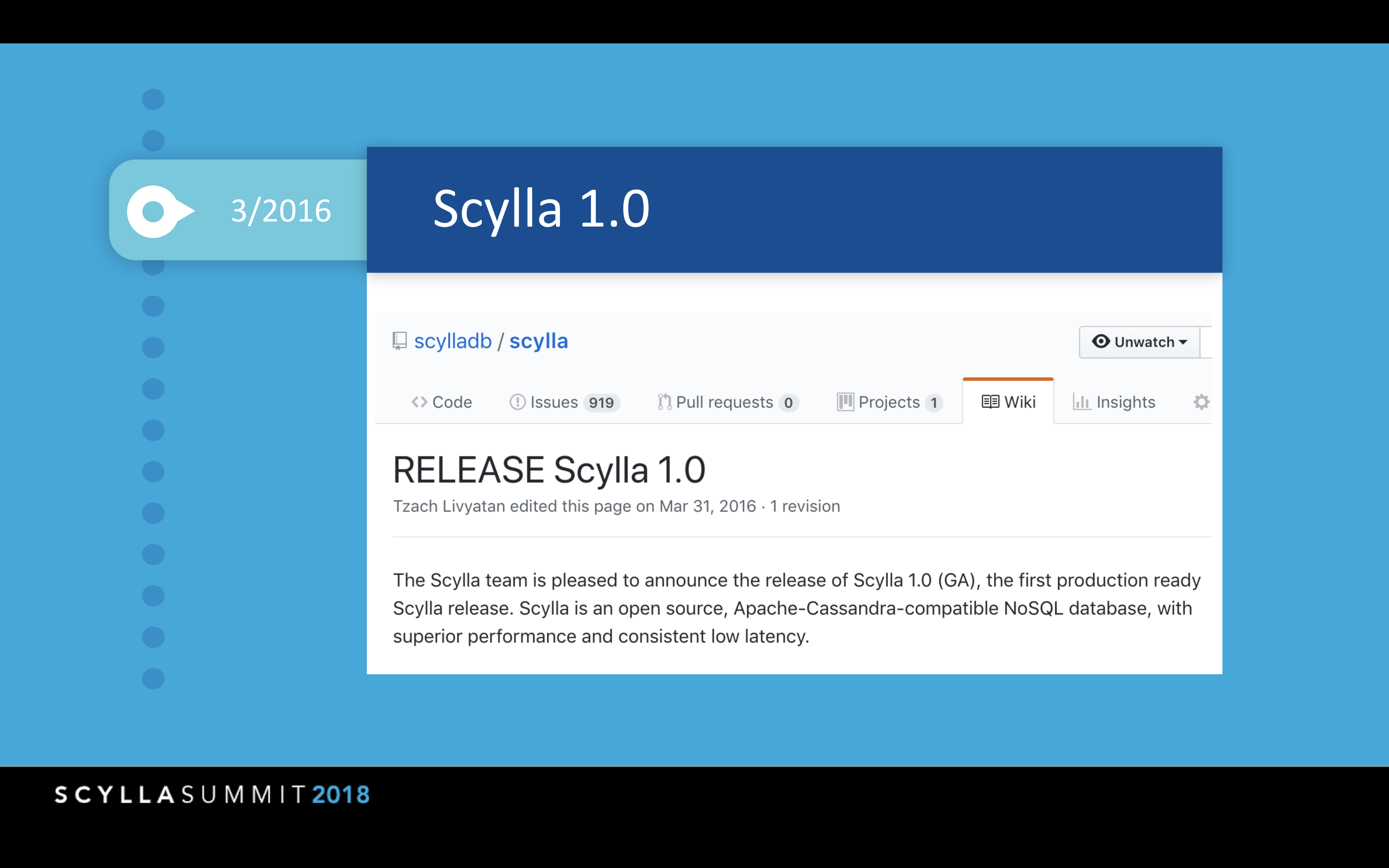
Over the ensuing three years we made a great deal of progress. We released ScyllaDB 1.0 at the end of March 2016. That year also saw the first ScyllaDB Summit in September. The following year, in March 2017, ScyllaDB unveiled its first Enterprise software release.
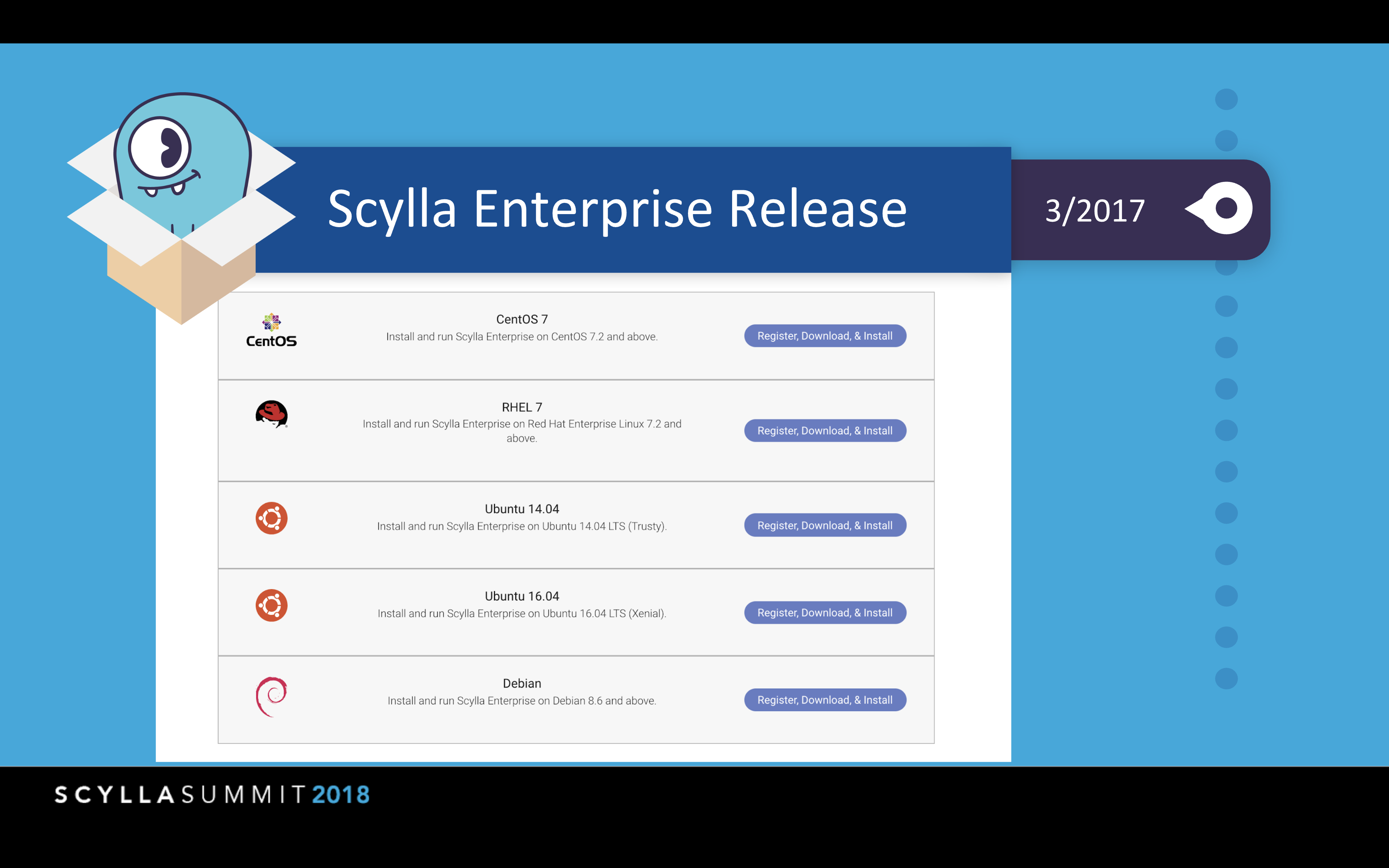
While ScyllaDB was blazing its own path in the world of NoSQL, Dor also remarked on the successes of others in the industry, including MongoDB’s public offering in October 2017, and the September 2018 IPO of Elastic. These events serve as validation of the growing Big Data market as the hunger for data increases, fed by the growing appetite of modern, planet scale software. Not only most enterprises now trust in the operational capabilities of NoSQL distributed databases, the new world requirements cannot be met by traditional relational models.
State of the Art
Moving to the present, Dor announced ScyllaDB Open Source 3.0. With this release, ScyllaDB was finally achieving feature parity with Cassandra, and, in some cases, it was taking the lead. For storage, SSTable format 3.0 (mc) would reduce data footprint on disk. Production-ready Materialized Views (MV) and Global Secondary Indexes (GSI) will help users access only the data they need. Lightweight Transactions (LWT) remains the last major feature to achieve full feature parity with Cassandra.
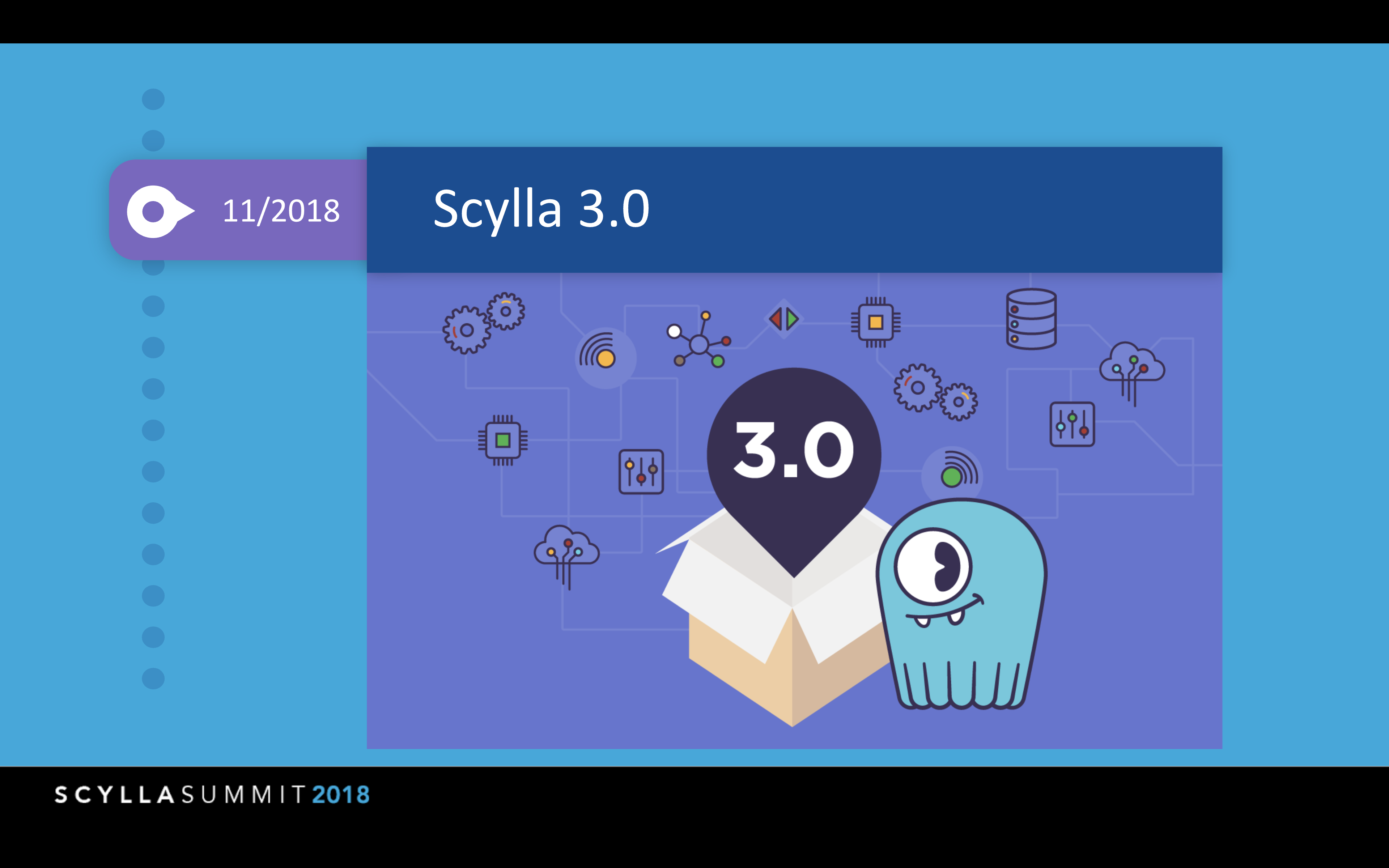
Dor also announced that our cloud managed database, ScyllaDB Cloud, was available as early access. running on Amazon Web Services (AWS), ScyllaDB Cloud lets users launch a fully managed single-tenant, self-service ScyllaDB cluster in minutes.
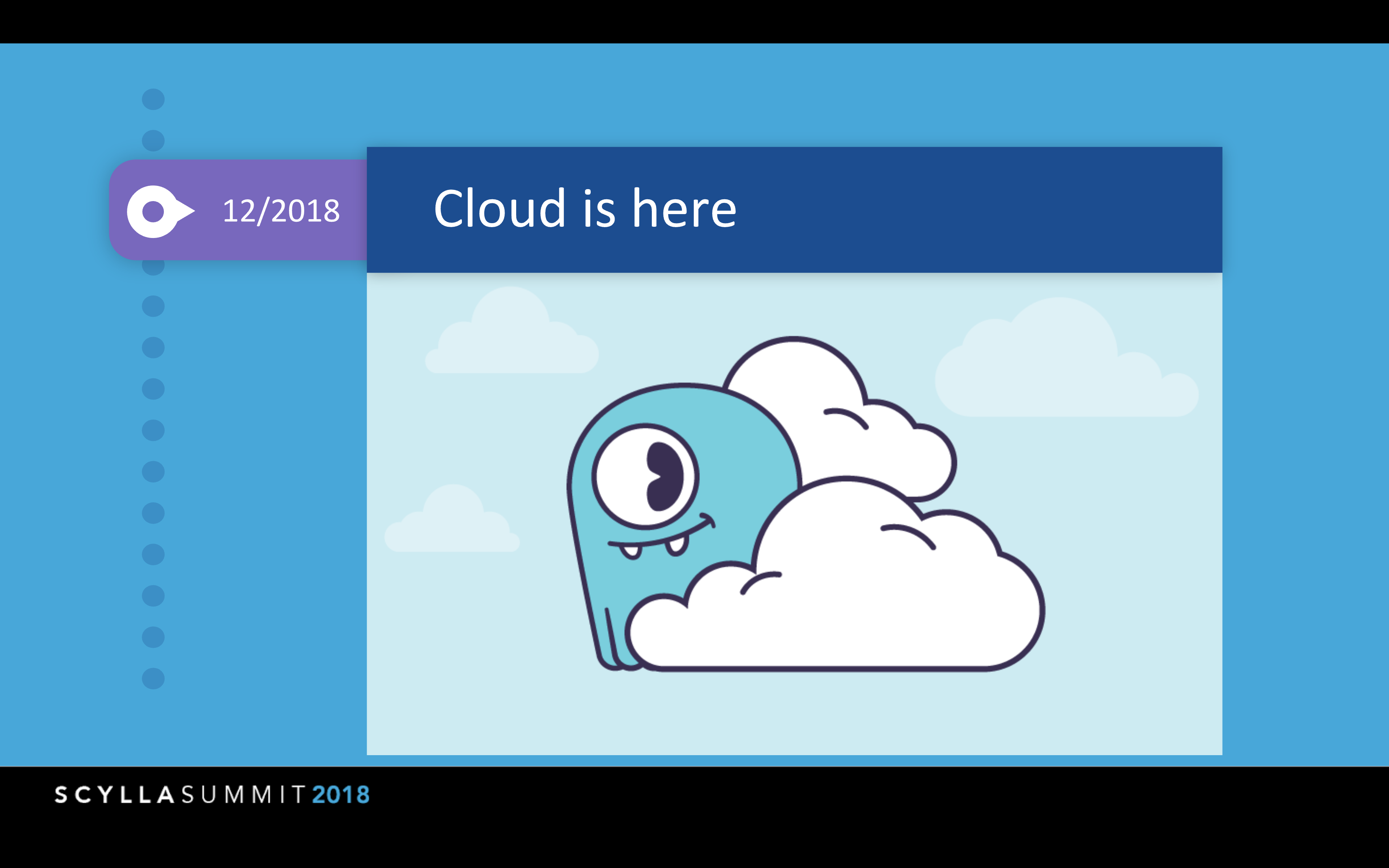
As much as we talk about Cassandra, we are shifting gears and wish to be competitive with the best of breed NoSQL databases, led by DynamoDB as an example.
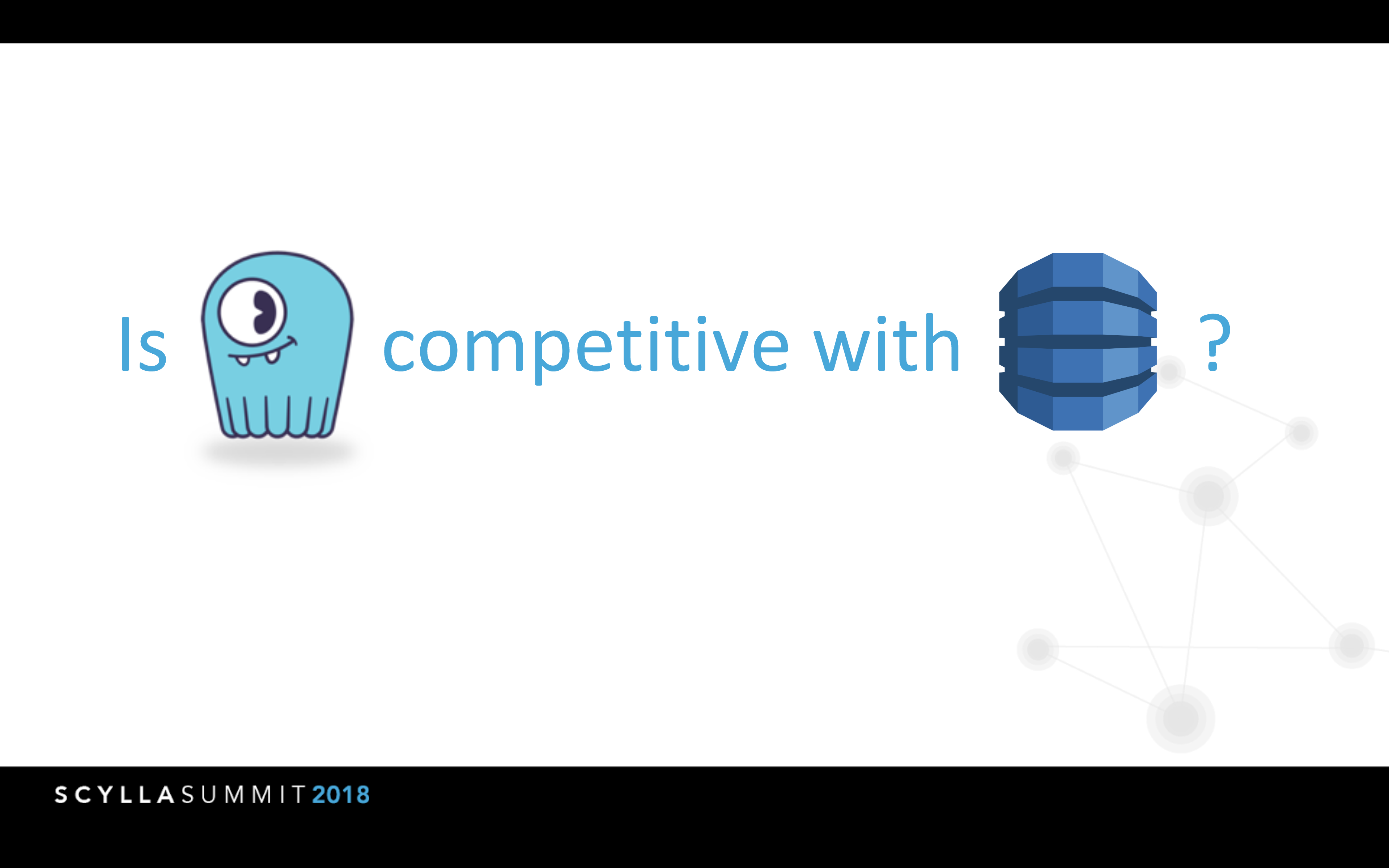
Dor shared results from a head-to-head YCSB comparison of ScyllaDB versus Amazon DynamoDB. We just recently published the comparative benchmark results. Our test results show you can achieve 1/4th the latency and spend only 1/7th the cost with ScyllaDB for similar throughput on DynamoDB. (ScyllaDB Cloud is 4-6X less expensive than DynamoDB.)
However, the real performance difference occurred in Zipfian distributions. You can read the blog in full as to why this is an important real-world consideration. Analogous test results were found for Bigtable, and CosmosDB was expected to perform similarly.
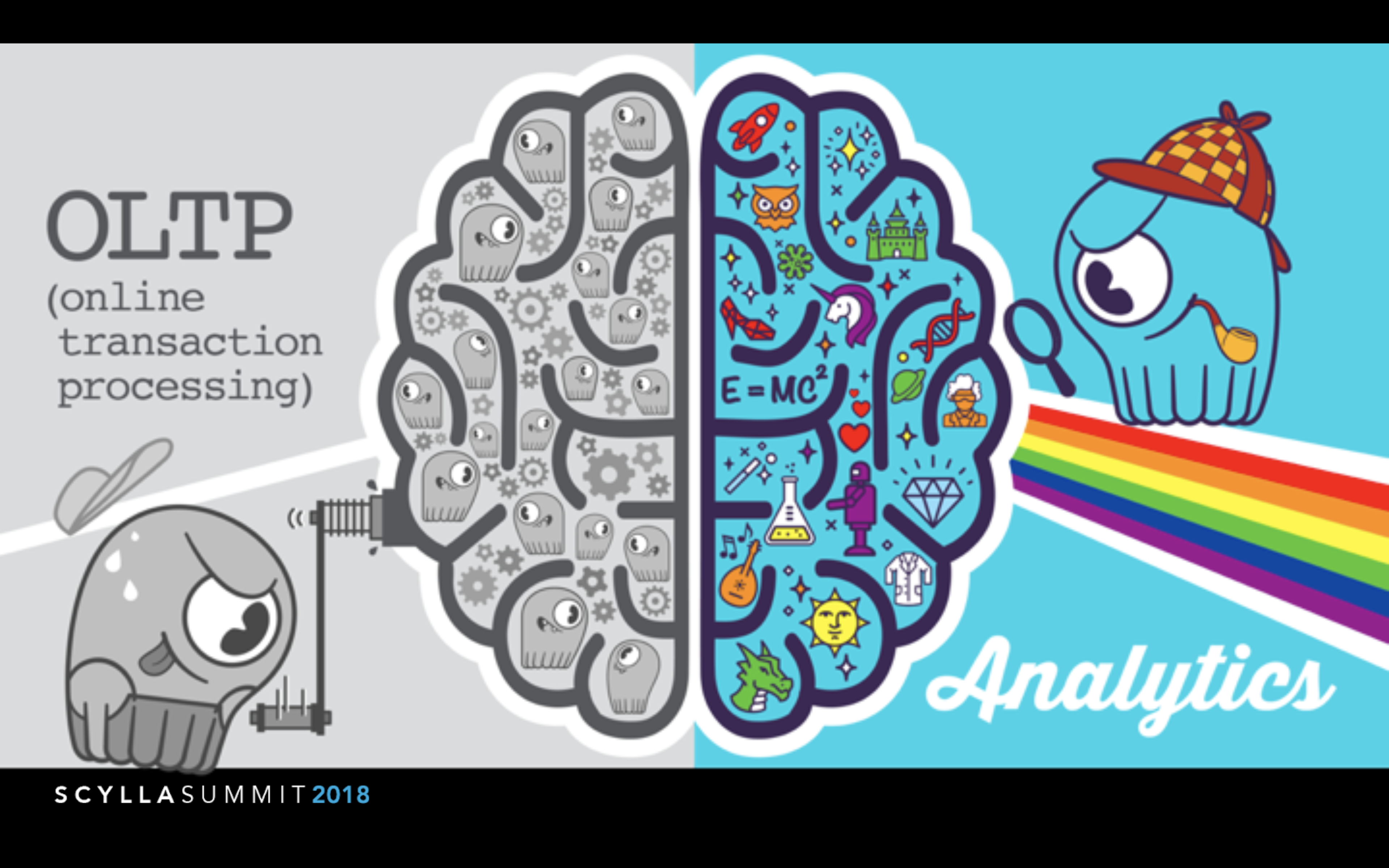
Another key feature introduced for the first time at ScyllaDB Summit 2018 was our unique ability to support per-user SLAs, allowing system managers to limit database resource utilization. With this, ScyllaDB customers can use the same ScyllaDB cluster to service both transaction processing (mixed read-write, or write-heavy loads) as well as analytics (read-only/mostly) requests. Glauber Costa would host a full session on this, entitled OLAP or OLTP: Why not both?
Per-user-SLA utilizes 3 years of development of SLA guarantee for real time operations over distributed database background operations such as compaction, repair and streaming. This is a point in time evolution towards perfect multi tenant database.
Dor then enumerated a list of noteworthy accomplishments and the challenges we still have before us. For example, while he was proud of our Mutant Monitoring System (MMS), there is still work to be done on our Knowledgebase, as well as our upcoming launch of ScyllaDB University. And while performance is good, and compactions are relatively smooth compared to other offerings, there are still more optimizations to be done. And while he was proud of the work we’ve done to integrate with Apache Spark, there’s a lot more to do to align ScyllaDB with Kubernetes.
The Shape of Things to Come
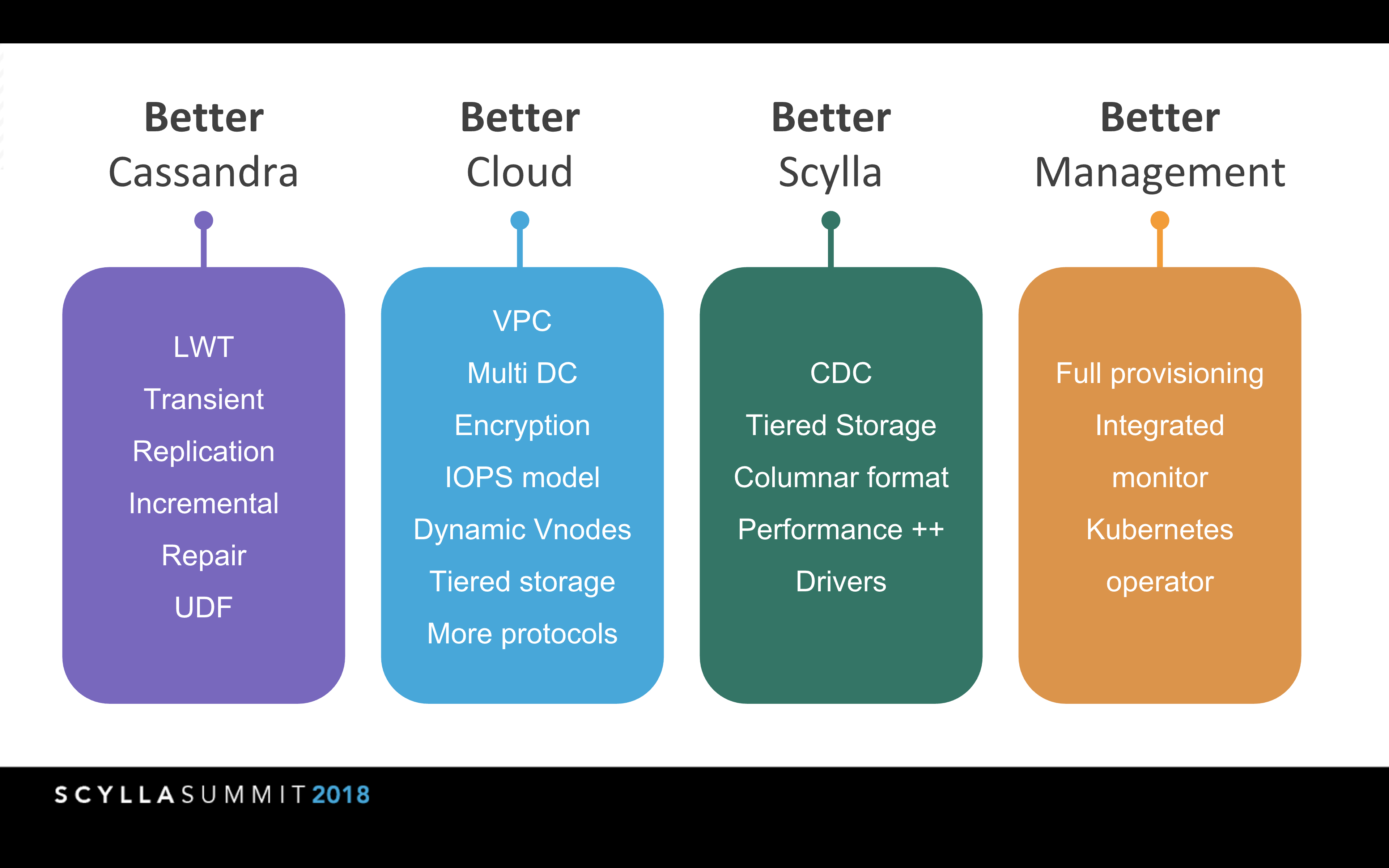
To conclude, Dor gave a glimpse into the future of ScyllaDB. Finishing up Cassandra parity features, especially Lightweight Transactions. Fleshing out ScyllaDB Cloud. Making ScyllaDB itself a stronger offering, with new tiered storage options, improvements in performance and additional drivers. And finally, making ScyllaDB even easier to manage.
It has been a remarkable journey over the past four years. From all of us at ScyllaDB, thank you for following us on our journey, and for a wonderful 2018.
Looking ahead, 2019 is sure to be another amazing year of pioneering achievements in the world of Big Data, both for ScyllaDB as well as our users and customers. We’re looking forward to all that we will accomplish together!

